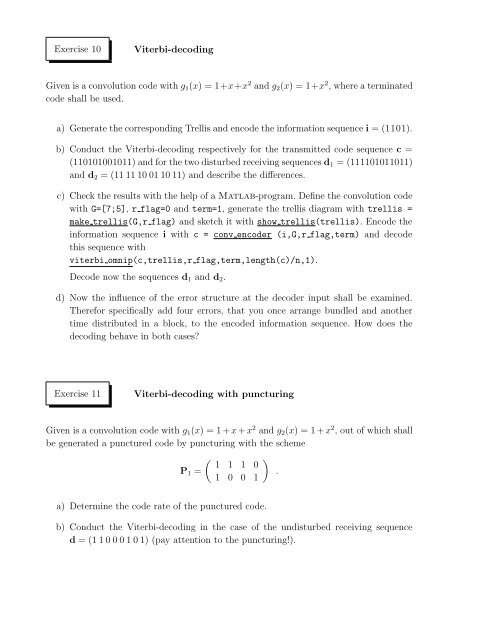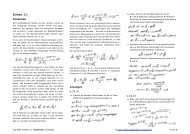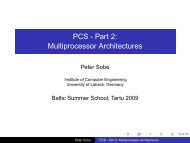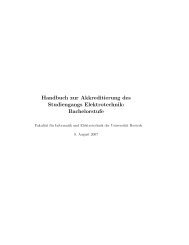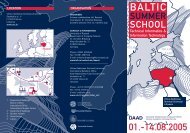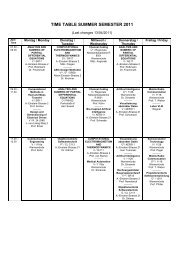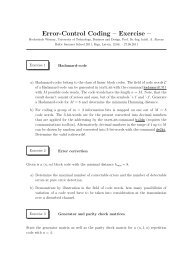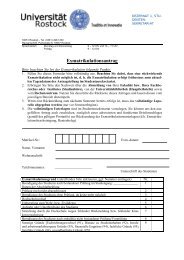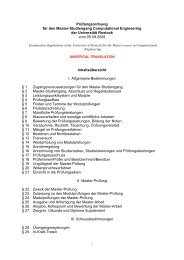Channel Coding â Exercise I
Channel Coding â Exercise I
Channel Coding â Exercise I
You also want an ePaper? Increase the reach of your titles
YUMPU automatically turns print PDFs into web optimized ePapers that Google loves.
<strong>Exercise</strong> 10<br />
Viterbi-decoding<br />
Given is a convolution code with g 1 (x) = 1+x+x 2 and g 2 (x) = 1+x 2 , where a terminated<br />
code shall be used.<br />
a) Generate the corresponding Trellis and encode the information sequence i = (1101).<br />
b) Conduct the Viterbi-decoding respectively for the transmitted code sequence c =<br />
(110101001011) and for the two disturbed receiving sequences d 1 = (111101011011)<br />
and d 2 = (11 11 10 01 10 11) and describe the differences.<br />
c) Check the results with the help of a Matlab-program. Define the convolution code<br />
with G=[7;5], r flag=0 and term=1, generate the trellis diagram with trellis =<br />
make trellis(G,r flag) and sketch it with show trellis(trellis). Encode the<br />
information sequence i with c = conv encoder (i,G,r flag,term) and decode<br />
this sequence with<br />
viterbi omnip(c,trellis,r flag,term,length(c)/n,1).<br />
Decode now the sequences d 1 and d 2 .<br />
d) Now the influence of the error structure at the decoder input shall be examined.<br />
Therefor specifically add four errors, that you once arrange bundled and another<br />
time distributed in a block, to the encoded information sequence. How does the<br />
decoding behave in both cases?<br />
<strong>Exercise</strong> 11<br />
Viterbi-decoding with puncturing<br />
Given is a convolution code with g 1 (x) = 1 + x + x 2 and g 2 (x) = 1 + x 2 , out of which shall<br />
be generated a punctured code by puncturing with the scheme<br />
P 1 =<br />
( 1 1 1 0<br />
1 0 0 1<br />
)<br />
.<br />
a) Determine the code rate of the punctured code.<br />
b) Conduct the Viterbi-decoding in the case of the undisturbed receiving sequence<br />
d = (1 1 0 0 0 1 0 1) (pay attention to the puncturing!).


